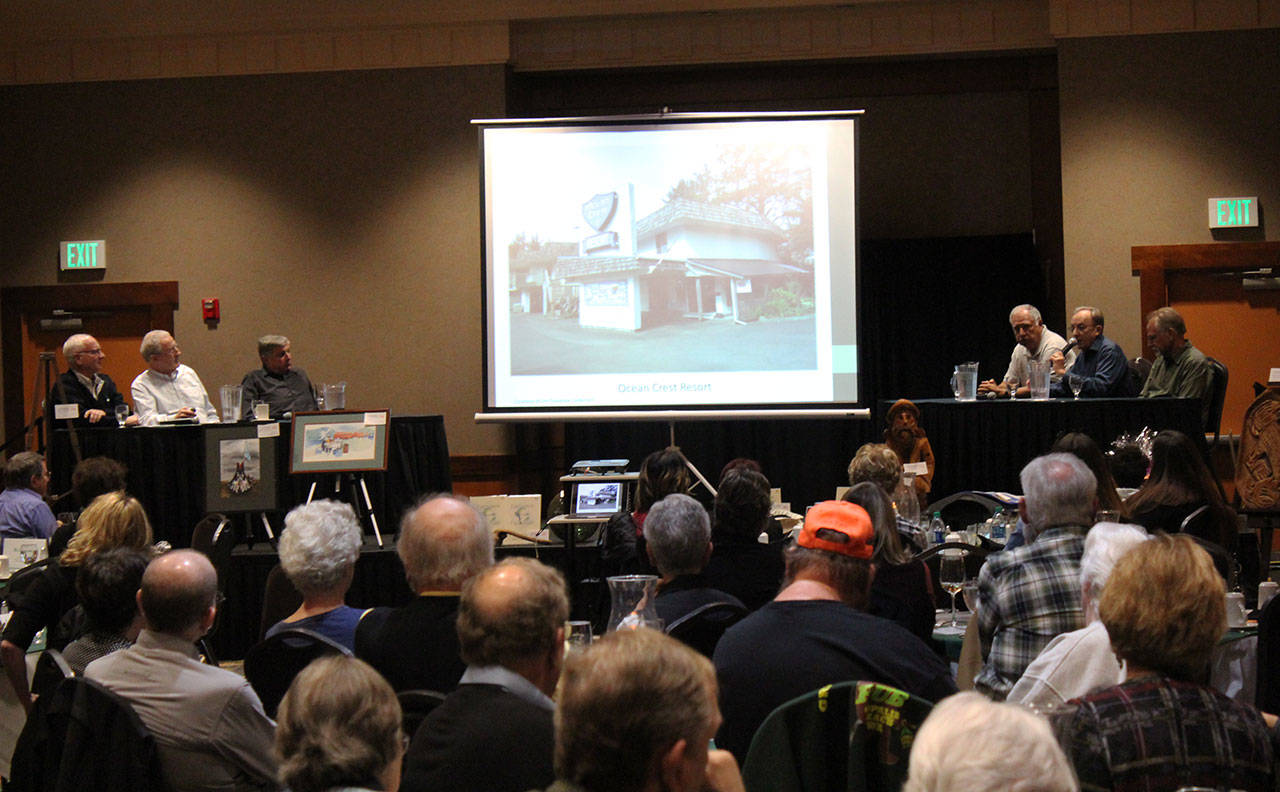The Museum of the North Beach hosted its fourth annual Heritage Fair on Saturday, Oct. 13 at the Quinault Beach Resort & Casino.
The event featured a live and silent auction to raise funds specifically for the new museum building project, now under way along Highway 109 just south of the Ocean Crest Resort.
The highlight of the program was a focus on “Remember When,” a panel discussion and video presentation featuring some of the most well-known names in the North Beach area.
Panelists included Rob Curtright from Moclips, Jim Donahoe from Ocean Shores, Patrick Hogan from Hogan’s Corner, Phillip Martin Jr. from Taholah, Tom Quigg from Aberdeen and Thorn Ward from Ocean Shores.
Curtright’s family has owned and operated the Ocean Crest Resort for seven decades: “We purchased the property and Ocean Crest Cottages in 1953.”
The family most recently donated the property where the new museum is being built.
The resort started out with a simple menu to serve food for guests staying at the cottages. “You had to make reservations, and when you made your reservations, you had to order your dinner,” Curtright said.
As a real estate salesman in the North Beach, Donahoe looks back on the history of the resorts and development of the area and sees so much potential: “I look at Pacific Beach, Copalis Beach and Ocean City, and the way they used to be in these photos, and think why in the world would we not want to have that again? Certainly we have the tourists and the locals who come down to enjoy it.”
Donahoe is leading a campaign, he said, to look at how to build back Main Street in Pacific Beach, for example, noting it used to support the Pacific Beach Hotel.
Kelly Calhoun, museum executive director and curator, also provided narrative and historical perspective during an hour-long slide presentation that accompanied the panelists. One slide showed what Calhoun said was “the infamous China sign from the Pacific Beach Hotel. It says, ‘China, 6,000 miles.’”
“On numerous occasions, this sign was stolen,” he noted.
Another slide showed the infamous Ocean Shores Clam carving that likewise vanished and is likely buried long ago in local lore.
Among the guests acknowledged during the presentation was Eleanor Lycan Ward, one of the surviving granddaughters of Dr. Edward Lycan, who built the ill-fated Moclips Beach Hotel, which was washed away into the ocean after successive storm that started in 1911.
“The only vacation I ever had, all of the times growing up … was in Moclips,” she recalled, noting the family moved to the Tenino area after her grandfather’s health began to fail.
“The big thing was to always go swimming, which I almost did today,” Eleanor said.
Ed DeLaCruz noted he was a graduate of the old Moclips High School, and his parents started the store in town that is still there on the hill above the Moclips River. At the old railroad depot, he said, they used to play basketball in a shed, with a hoop on each end.
Quigg highlighted a photo of what was called a sea otter platform, which hunters would use to shoot at what are now a protected animal. “The otters would be out in the waves and they would shoot them, and then they would have people on the shore who would pick up the carcasses as the waves brought them in,” Quigg said. “There were so many platforms that there were often arguments over who shot the otters. So each hunter would mark his bullet with a certain mark, so they could identify which hunter shot which otter.”
Hogan, whose grandfather Giles first owned the land that is now known as Hogan’s Corner.
“He was very proud when the regional library put a library at Hogan’s Corner,” he noted, showing a photo of the ribbon cutting for the library extension. “He so happy when it came in there. He always had this wry smile going, he was a fun, old-time gentleman. He was around here for a very long time and worked hard all his life.”


